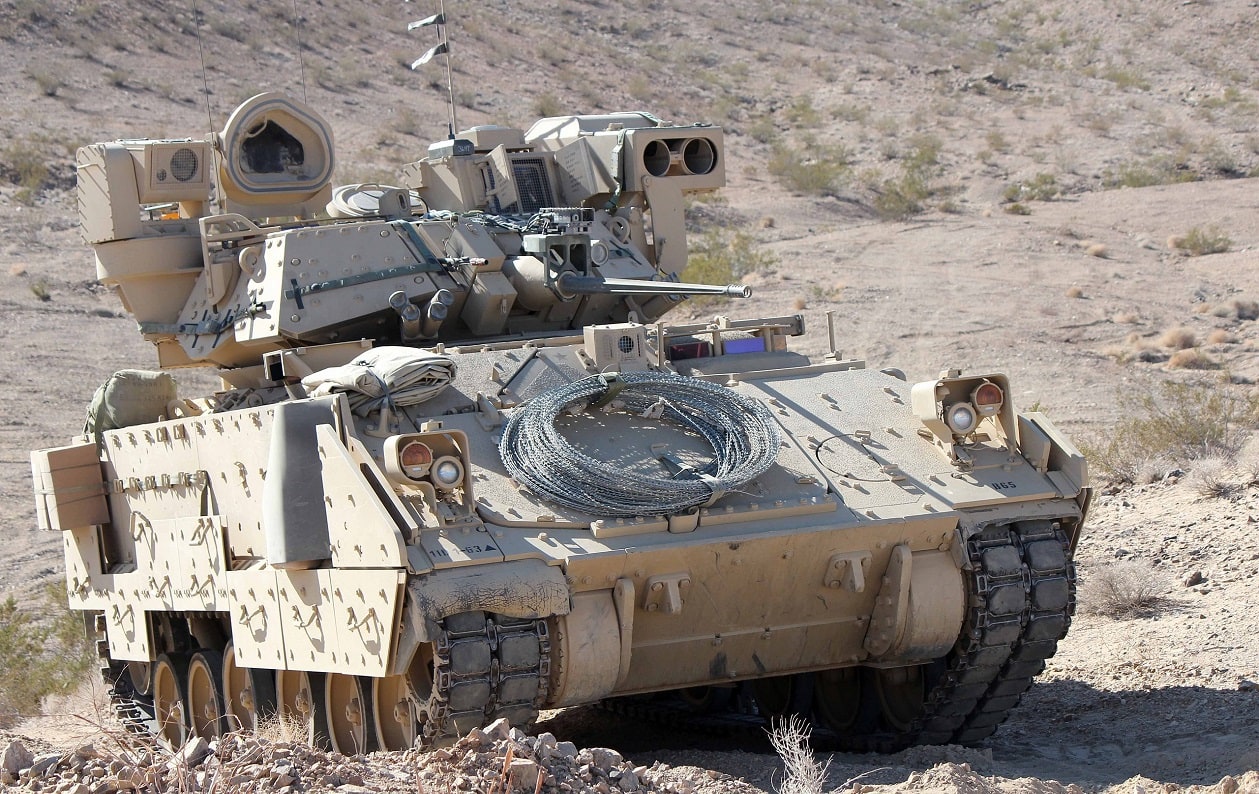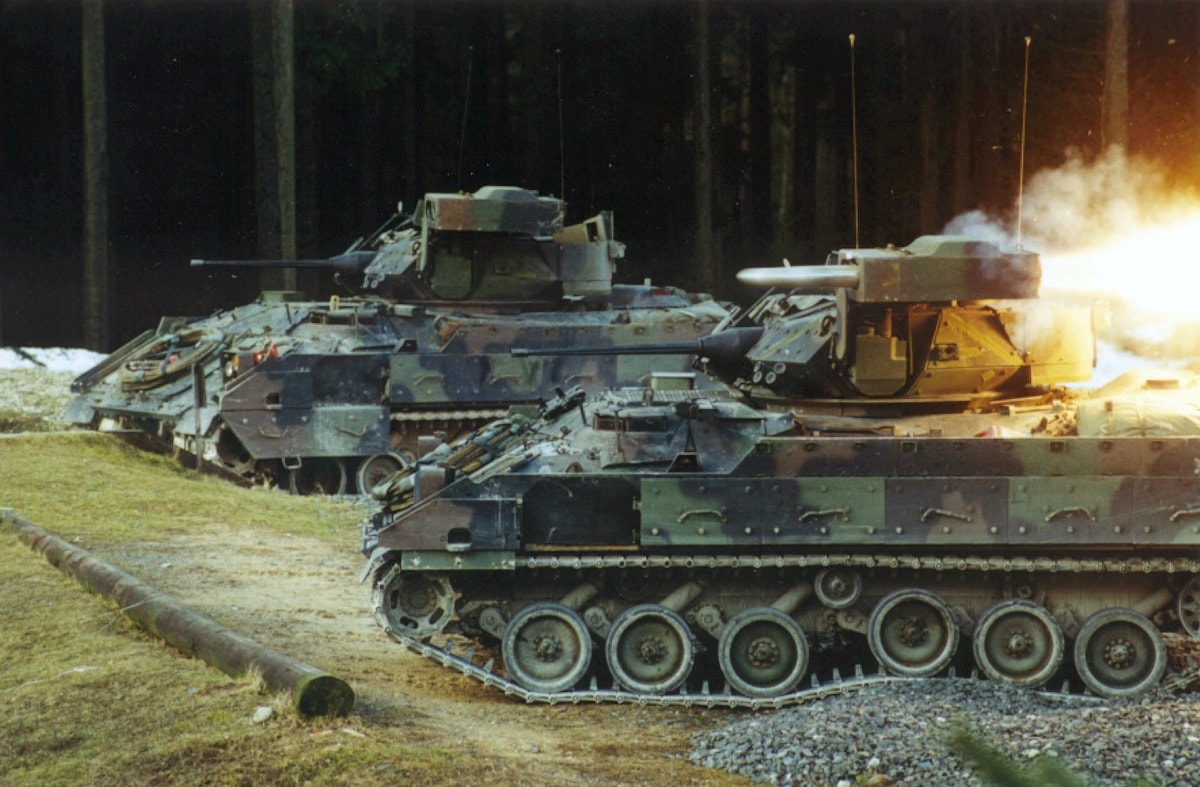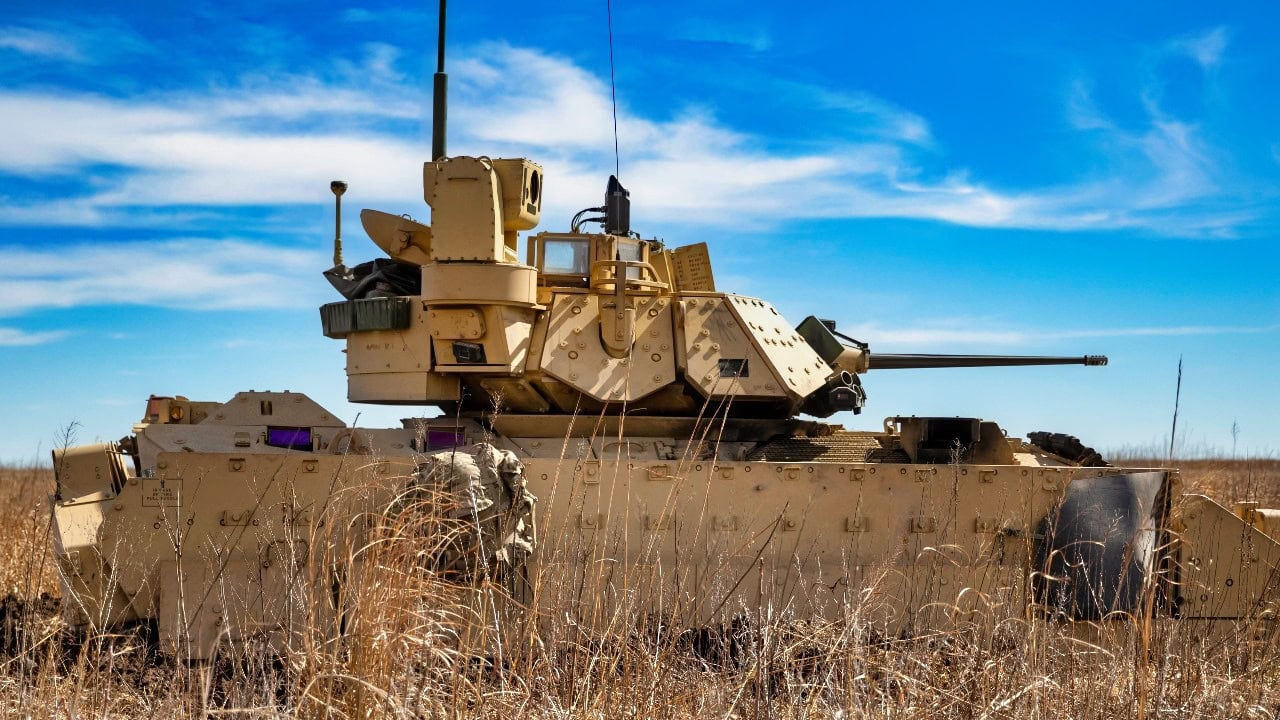Just Too Old to Fight in 2024? The Bradley Fighting Vehicle (IFV) has served as a cornerstone of U.S. mechanized forces since 1981. Praised for its firepower, survivability, and mobility, the Bradley remains a potent battlefield asset.
-Equipped with a 25mm M242 chaingun, TOW missile launchers, and a 7.62mm M240C machine gun, it supports infantry with unmatched versatility.
-Despite early skepticism, the Bradley has proven itself in conflicts like Desert Storm, the Iraq War, and now in Ukraine.
-Continuous upgrades, including the M2A3/M3A3 and the latest A4 variants, ensure its relevance. Recent contracts confirm its enduring role in the U.S. military’s combined arms strategy.
M2 Bradley: The U.S. Army’s Battlefield Legend Lives On
The Bradley Infantry Fighting Vehicle (IFV) has had a long, distinguished career. First fielded in 1981, it has a tremendous track record as the premier IFV in the world, and its legend continues.
On the battlefields in Ukraine, Ukrainian infantry soldiers love the Bradley for its firepower, survivability, and cross-country movement. Like the M1 Abrams series of tanks, the venerable M2 Bradley’s 43 years (and counting) of service has lasted because of the enhancements that have upgraded the vehicle.
While the Army has two separate design teams working on the eventual replacement for the Bradley, the XM30 Mechanized Infantry Combat Vehicle, the Bradley isn’t going anywhere in the interim.
Specifications
The Bradley is a fully tracked, lightly armored infantry fighting vehicle that has the mobility to keep up with M1 Abrams tanks and the firepower to defeat the enemy, while providing the crew protection from small arms and artillery fire.
The Bradley is used in mechanized infantry and armored cavalry units.
Manufacturer: BAE Systems
Engine: Cummins VTA-903T diesel that produces 760 horsepower
Armament: 25 mm M242 chain gun; two TOW anti-tank missile launchers; 7.62 mm M240C machine gun
Crew: 3 crew, 6-7-man infantry squad
Range: 300 miles
Speed: 41 mph
Weight: 24.7 tons
Bradleys Pack A Powerful Punch:
The Bushmaster M242 25mm chaingun is a battle-proven, dual-feed chain gun that has been used to devastating effect by US and allied crews around the world. Some 11,000+ are now in service. It is the primary weapon of the Bradley Fighting Vehicles.

An M2 Bradley Fighting Vehicle is on display during a training exercise at the National Training Center in Fort Irwin, Calif., Feb. 18, 2013. The live, virtual and constructive training environment of the National Training Center is designed to produce adaptive leaders and agile forces for the current fight, which are responsive to the unforeseen contingencies of the 21st century. (U.S. Army photo by Sgt. Eric M. Garland II/Released)
The Bradley has two TOW missile launchers and can hold 12 missiles. It also has a M240C machine gun mounted in the turret.
In addition to the organic weapons onboard, the infantry inside the vehicle could fire while on the move using their M-16/M4 carbines via firing ports or dismount and fight outside the vehicle. However, the firing ports were found to be unreliable and were subsequently removed.
The difference between the M2 and M3 Bradleys is that the M2 series carries more troops (6), and the M3 Cavalry model carries only four troops but more ammunition.
Vehicle’s History
Despite its unpopularity among the troops when it was first introduced, with many infantry troops derisively calling it a “recycled Budweiser can,” the Bradley silenced its critics with a stellar record in its first wartime action. It proved that it could protect its troops and deliver them safely to the battlefield while delivering devastating fire power against the enemy.
During Desert Storm in 1991, over 2,200 Bradleys were deployed into combat, and only three were lost to enemy fire. However, changes were adopted after Desert Storm to improve the Bradleys. A GPS capability was added, along with anti-tank missile countermeasures, improved ammunition storage, and re-designed seating.
Enhancements made during the M2A3/M3A3 production models included a flat-panel display unit for the commander, squad display units for the troops in the vehicle’s rear, a driver display unit, and a mass memory unit.

Bradley Infantry Fighting Vehicle
During the second Gulf War, the Bradley enjoyed early success working alongside the M1A2 Abrams during a combined arms invasion. But after the conflict turned into an asymmetrical insurgency, many Bradleys (about 150) were lost in street fighting with close contact firefights with insurgents using RPGs and small anti-tank weapons.
The Bradley has been used in Ukraine to great effect against the Russian invasion. It won’t be a surprise to see the US send them even more Bradleys in the future as they have expressed their confidence in it.
The Future Is Still Bright for the Bradley
The Bradley is still a great complement to the Abrams in the US’ Combined Arms approach to combat. They’re battle-proven, reliable, and tough. Just in September, the US Army and BAE Systems finalized a $440m contract to produce even more Bradley fighting vehicles.
Under this contract, BAE will produce more than 200 A4 variants, which will be delivered to the US Army as updated, enhanced replacements for some of the Bradleys supplied by the US to Ukraine.
The Bradley should remain in the US and allied inventory for years.
About the Author
Steve Balestrieri is a 19FortyFive National Security Columnist. He served as a US Army Special Forces NCO and Warrant Officer. In addition to writing for 1945, he covers the NFL for PatsFans.com and is a member of the Pro Football Writers of America (PFWA). His work was regularly featured in other military publications.

